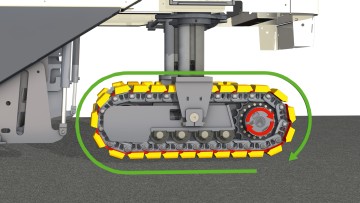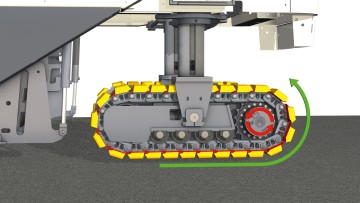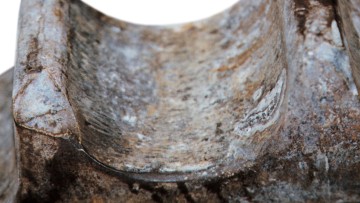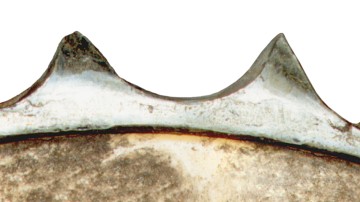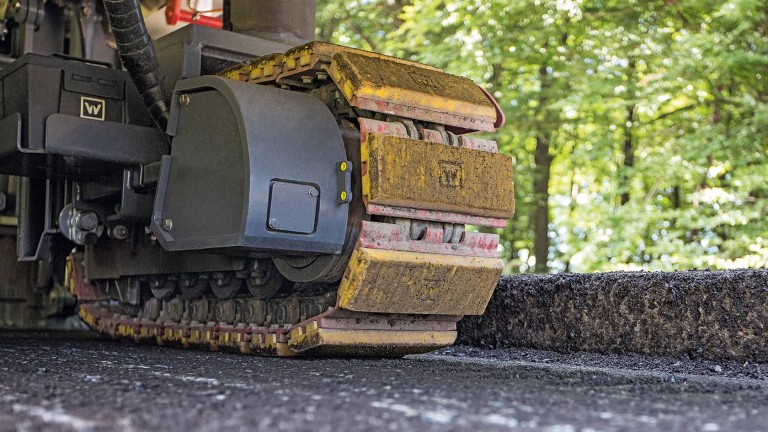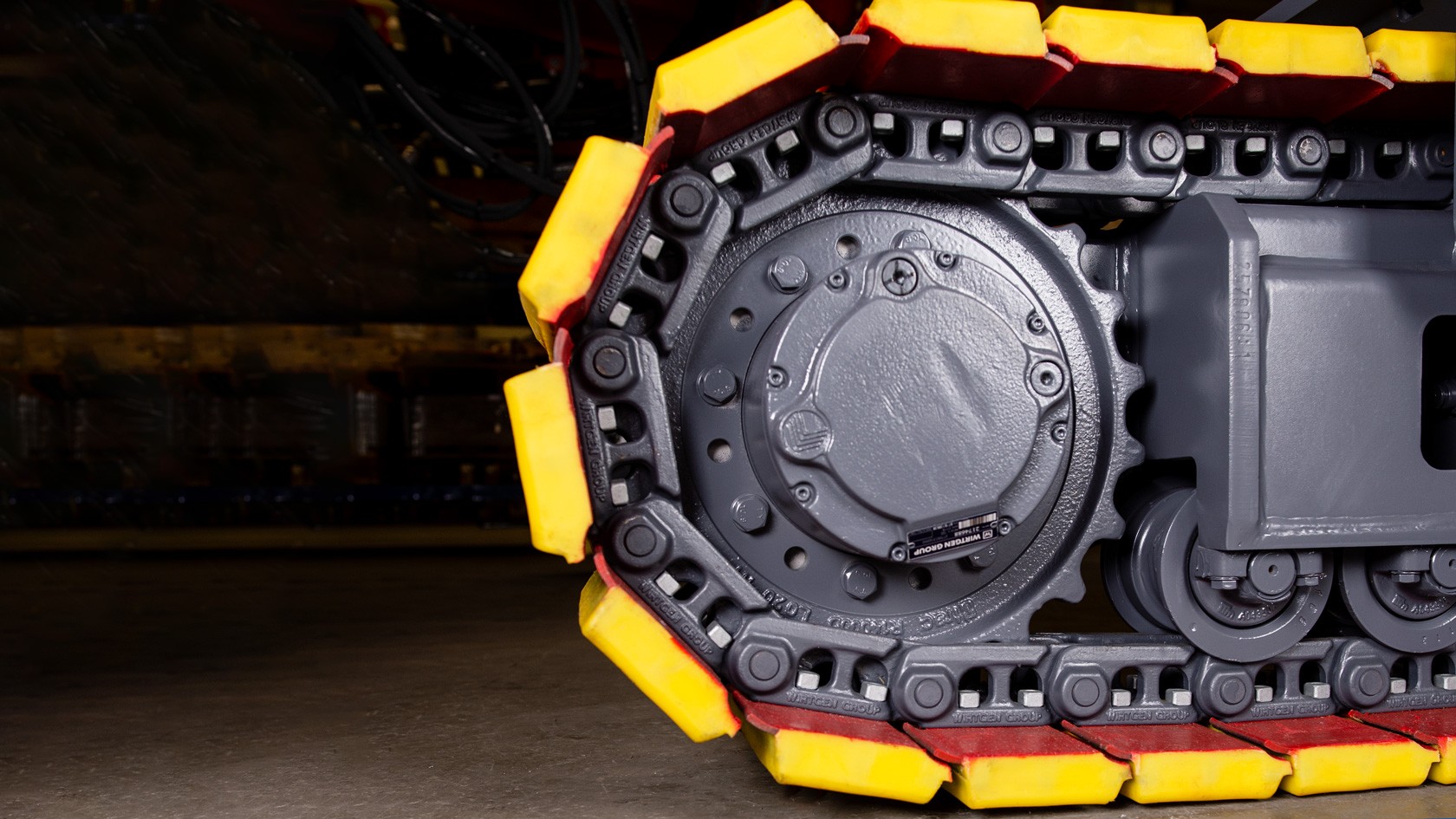

Drive sprockets
On all WIRTGEN tracked machines, the drive unit is friction-locked to the drive sprocket. This ensures that the engine power is efficiently and effectively transmitted to the track chains, where it is transformed into high-traction forward motion. The drive sprocket transmits the drive torque of the respective hydraulic motor to the link chain via a gearbox by engaging with the track chain, rotating and thus setting the crawler unit in motion.
In crawler units, the drive sprockets are located on the rear axle in the direction of travel. When reversing, track wear is higher because the load on the track chain is increased by the longer tight span over the idler sprocket. Long periods of reverse travel therefore considerably accelerate wear on crawler unit components. During forward travel without milling, the shorter tight span reduces the load on the crawler unit parts. This means that crawler unit wear can be kept to a minimum by using forward travel when relocating the machine.
Drive sprocket wear
The take-up and advance movement of the track chain bushes by the teeth of the drive sprocket causes wear both on the chain and on the drive sprocket itself and changes the geometry over time.
The tooth pitch of chain and drive sprocket is precisely matched. Excessive wear of the drive sprocket increases the separation of the tooth flanks (the cross-sections are reduced by wear), which leads to increased wear or elongation of the chain links (particularly when using a worn drive sprocket with a new chain). The pressure on the pins and bushes increases and accelerates the wearing of these components.
Due to the shape of drive sprockets, wear on these components cannot be determined by measurement and subsequent comparison of measured vales with a wear table. For reliable wear assessment, the only option remaining is visual inspection for atypical damage (e.g. cracks on the teeth, cracks in the drive sprocket, etc.) or wear caused by continual rubbing on the tooth flanks or the front face of the gear wheel.
